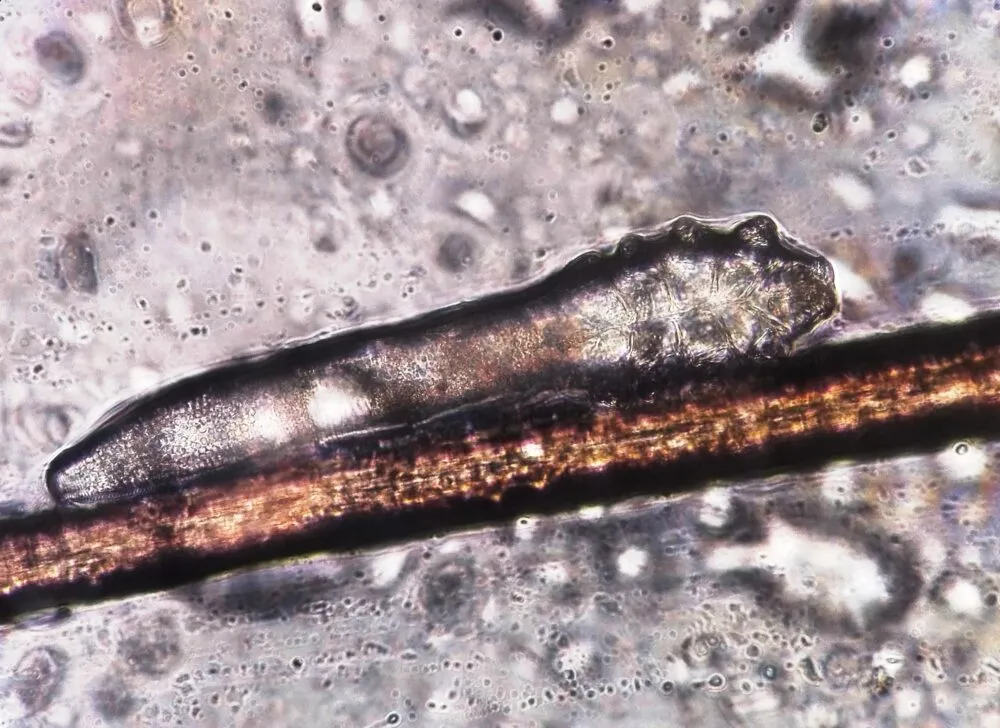Your face has some obvious features that make it up. Nose, eyelashes, your mouth – all of these stand out… but what happens when you zoom in? On a microscopic level, our faces have their own very active populations.
Inside the pores on our faces live a host of tiny mites known as Demodex. These little inhabitants of our skin are roughly 0.3 milimeters long – around half the size of the side of a credit card.
Mostly transparent, you would need a microscope to discover these mites, and yet, they are in the skin of just about every adult human alive today. These mites usually number in the millions, but don’t worry – they are completely safe, in fact, they are actually just trying to help you out!
This army of mites eats up the dead skin cells, oil and hormones found in your hair follicles and on your face. Not exactly a glamorous life, once they’ve had their fill of dead skin, they usually die after around two weeks, breaking down inside your hair follicles.
But what do these skin inhabitants actually look like? Well, they come in two different types – Demodex folliculorum and the Demodex brevis. The D.brevis type is slightly smaller but otherwise they look very similar.

Both types of Demodex mites have long, transparent bodies. They’re covered in scales which help them attach to hair follicles. The main difference between the two types is how they divvy up your face. A D.folliculorum mite likes to get inside your hair follicles, whereas brevis prefer to do a deep dive into your sweat glands.
However, while they have a particular soft spot for your face and eyelashes, these mites can be found anywhere on your body, just in much smaller numbers.
These mites can’t actually be removed by washing your face, or through a vigorous scrub.
While they are completely harmless and our immune system keeps numbers in check, it is possible in rare cases to have an infestation of them, mostly in people with weak immune systems.
Despite this, Demodex are considered commensal organisms, not parasites. This means they derive food and shelter from their host, but don’t actually harm them – consider them friendly, helpful neighbours that you don’t want to get too close a look at.
Read more:
